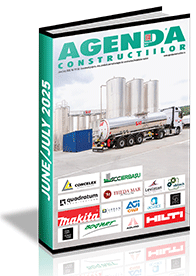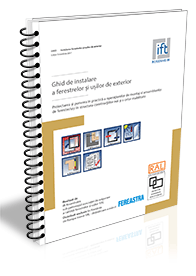| ANALYSIS: About 150 million euro for thermal insulation systems market |
| English Section Publicat de Ovidiu Stefanescu 30 Sep 2015 13:06 |
 The local market of mineral wool insulation systems, which is estimated at 40-50 million euro annually, could increase by more than 5% in 2015, due to the improvement of the number of building permits, positive signals in the economy and raising awareness of population on the effectiveness of thermal insulated buildings. Regarding the segment of expanded polystyrene (EPS), after the start of the peak season in 2015 the situation is similar to 2014, without a significant advance. Monthly are recorded some atypical fluctuations due to the sharp rise in commodity prices in early 2015. The local market for EPS is valued at about 100 million euro annually, 90% of demand being represented by the construction sector and 10% by EPS packaging market. After a decrease situated between 5% -10% in the local insulation market in 2014, both producers and importers of mineral wool, expanded polystyrene and specialized providers are presuming on a growth in 2015. As the demand for wool insulation systems will grow predominantly due to industrial and commercial projects, the orders EPS will become higher in particular because of the works of thermal rehabilitation of housing buildings. Professionals on both insulation markets remain broadly optimistic about the potential of this segment, especially taking into account the need to respect European legislation on energy efficiency in buildings, which should lead, at least in theory, to an increase of demand for isolation materials. Domestic producers and importers of mineral wool are represented by five major companies, whose interests are supported by the Association of Producers and Importers of Mineral Wool in Romania (APIVMR), namely: Saint-Gobain Construction Products - Isover Business Unit, Rockwool Romania, Ursa Romania, Knauf Insulation and Gecsat International. Meanwhile, in Romania are active around 50 manufacturers of EPS, which have a total capacity of manufacturing over 8 million cubic meters/year, while annual consumption is less than 3 million cubic meters/year. The local market of mineral wool insulation systems, which is estimated at 40-50 million euro annually, could increase by more than 5% in 2015, due to the improvement of the number of building permits, positive signals in the economy and raising awareness of population on the effectiveness of thermal insulated buildings. Regarding the segment of expanded polystyrene (EPS), after the start of the peak season in 2015 the situation is similar to 2014, without a significant advance. Monthly are recorded some atypical fluctuations due to the sharp rise in commodity prices in early 2015. The local market for EPS is valued at about 100 million euro annually, 90% of demand being represented by the construction sector and 10% by EPS packaging market. After a decrease situated between 5% -10% in the local insulation market in 2014, both producers and importers of mineral wool, expanded polystyrene and specialized providers are presuming on a growth in 2015. As the demand for wool insulation systems will grow predominantly due to industrial and commercial projects, the orders EPS will become higher in particular because of the works of thermal rehabilitation of housing buildings. Professionals on both insulation markets remain broadly optimistic about the potential of this segment, especially taking into account the need to respect European legislation on energy efficiency in buildings, which should lead, at least in theory, to an increase of demand for isolation materials. Domestic producers and importers of mineral wool are represented by five major companies, whose interests are supported by the Association of Producers and Importers of Mineral Wool in Romania (APIVMR), namely: Saint-Gobain Construction Products - Isover Business Unit, Rockwool Romania, Ursa Romania, Knauf Insulation and Gecsat International. Meanwhile, in Romania are active around 50 manufacturers of EPS, which have a total capacity of manufacturing over 8 million cubic meters/year, while annual consumption is less than 3 million cubic meters/year. |
ABONARE REVISTA (click aici): PROIECTE | INVESTITII | REVISTE | INDEX COMPANII
DATE DE CONTACT: Agenda Constructiilor & Fereastra - Tel/Fax: 021-336.04.16, 031-401.63.88
Documente
13 sep 2019




















































